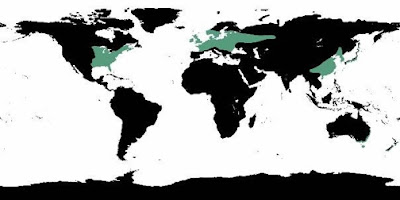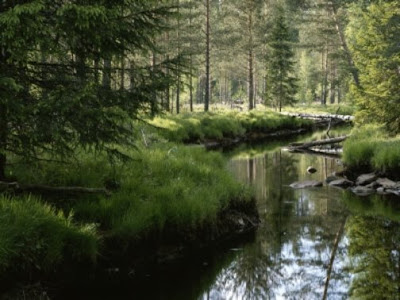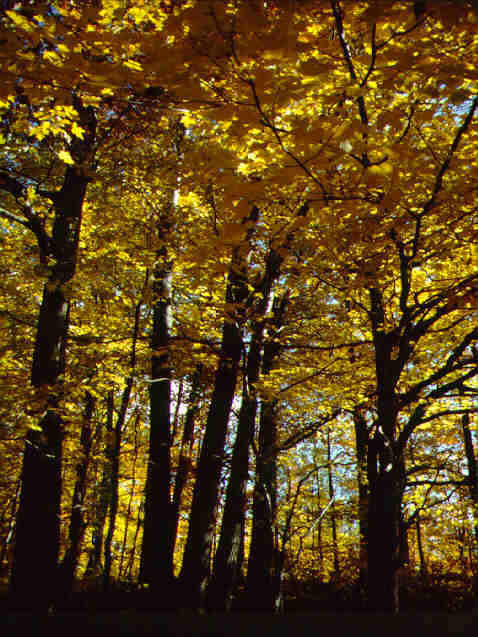
Tuesday, November 17, 2009
TEMPERATE GRASSLAND

 The animals of the grassland are coming back. The many herds are coming to graze on this land. Since it is this time of year we will give you a 30% off ticket to visit these thousands of animals in the grassland.
The animals of the grassland are coming back. The many herds are coming to graze on this land. Since it is this time of year we will give you a 30% off ticket to visit these thousands of animals in the grassland.The grassland biome is located all over the world. You have a chance of going to central United States, Eastern South America, South Africa, and Eastern and Western Asia.
 There are many different types of grassland. There is tropical, dry, and there are several different names for them around the world. The average temperature could be thirty degrees in January and then seventy degrees in July. Precipitation is not very high only about ten to thirty inches a year.
There are many different types of grassland. There is tropical, dry, and there are several different names for them around the world. The average temperature could be thirty degrees in January and then seventy degrees in July. Precipitation is not very high only about ten to thirty inches a year.On this spectacular trip we also gave you some list of clothes and equipment you might need. For clothing, it depends on the season. In the early months you should bring a jacket and long pants. In the late months you may wear a short sleeve shirt and shorts. Some good special equipment would be a water bottle, a tent, something to protect yourself with incase animal attacks you.
We have provided a list of activities and a tour guide for your trip to the grassland. You may ride on an elephant, or play in the grass; you can see and pet some of the biggest animals in the world. We even give you a chance to feed any animal, if you want to you may feed THE WHOLE HERD!
There is only one plant that consists in grassland. Obviously, it is grass.
Grass adapts to its environment because it is the pioneer species. It has already adapted and it has the perfect details for grass.
Two animals in the grassland are the giraffe and the zebra. The giraffe adapts by having a long neck so it can eat from tall trees. Zebras eat from the top of the grass to save food for the other animals.
If you go to the grassland stay away from doing these two environmental issues. Fire is one great issue. If f the se fires keep on happening it can cause wild fires and destroy all of the animals and plants in the grassland. In the grassland a lot of the land is being turned into agriculture. If this continues all organisms will be instinct in the grassland.
Monday, November 16, 2009
TROPICAL RAINFOREST

 Have you ever-wanted lots of rain, see more than fifty percent of all living things on the planet? If you do this is the place to go.
Have you ever-wanted lots of rain, see more than fifty percent of all living things on the planet? If you do this is the place to go.The rainforest is located in northeastern Brazil, central Africa, and south Asia.
The rainforest has an average of two hundred fifty centimeters off rain a year, which makes the climate very humid. Most of this biome is found near the equator so there is mostly direct sunlight. There is really only one season in this biome, which is summer. The average temperature in the rainforest is 77 degrees.
Even though this biome is so hot I still believe you should bring long pants and a long sleeve shirt to keep mosquitoes, and poison plants away from you. Bring lots of water, a raincoat, raingear and an umbrella.
The fun thing about this biome is the many things you can do. You may swing from vine to vine, examine many animals, climb a tree, and play with the rain. You may have a chance to see an organism that has not been discovered yet!
One well-known plant in this biome is the Bengal bamboo. This plant is made for rain and loves temperatures between forty and one hundred degrees. It is slimy to keep to much rain from getting on it. Another plant is the Orchid, this flower plant blooms in many different colors because of the sunlight and rain in the biomes.
The African forest elephant is a well-known animal in the rainforest. The rainforest elephant is adapted to live in dense areas. Their tusks are straight instead of curved because they could get caught in a vine. Another animals is the sloth, it is adapted to live in trees, so this biome is a great place for it to live.
Two environmental issues in the rainforest are logging and pollution. Logging looses the lives of man organisms and destroys the area. Pollution can cause plants and animals to die and kill all animals on that planet.
SAVANNA

 The cool breeze of the savanna has opened for a one-day FREE trip. You may visit some elephants and see the great herds of this land.
The cool breeze of the savanna has opened for a one-day FREE trip. You may visit some elephants and see the great herds of this land.If you want to visit the savanna go to Africa, India, or Northern Australia.
The savanna has a wet, dry climate. The temperature is usually 68 to 86 degrees. During the dry season the animals migrate to find food but in the wet season the animals migrate back to graze on the food.
 The weather is not bad here. Bring some long pants and a long sleeve shirt. You might want to bring a tent, sleeping bag, and a raincoat just incase it is the wet season. Bring lots of water to stay hydrated.
The weather is not bad here. Bring some long pants and a long sleeve shirt. You might want to bring a tent, sleeping bag, and a raincoat just incase it is the wet season. Bring lots of water to stay hydrated.There are many activities to do in the savanna. In Africa you can ride on an elephant, lay and feel the cool breeze in the biome. This is an open space where you can run around for miles and do whatever you want. It is like having a big back yard.
The Senegal Gum Acacia is a thorn tree in the savanna. They are adapted to live withought much rain. They can reach heights of up to twenty meters tall. Another plant is the Umbrella thorn Acacia. This plant has thorns to keep animals from eating it. This plant can survive in fifty-degree temperatures in mid-day and then have freezing temperatures at night.
Two environmental issues in the savanna is acid rain and logging Theses two issues can cause you two never see a savanna again. Logging is cutting down trees and you do not want animal’s homes to be tooken. How would you feel after coming back home from migrating and you can’t wait to eat from your favorite tree and you come to see that it is chopped down? Acid rain causes unhealthy rain to the savanna and when animals drink i
DESERT

 Are you ready for the great sales in the desert? If you want this you have a choice of going to Australia, mid Asia, Southern California, or Northern Africa.
Are you ready for the great sales in the desert? If you want this you have a choice of going to Australia, mid Asia, Southern California, or Northern Africa.Deserts have an average temperature of 64 degrees. When people think of desert they usually think hot but that isn’t true. A desert is just a very area. The deserts global area covers 1/5 of all the land on earth. Approximately only one inch of rain falls a year in the desert.
With this great deal we also have a list of equipment you should bring during this trip. If you are going to a hot desert bring shorts and a short sleeve shirt. Ring lots of water, and other cold things to stay cool. You may want to bring an umbrella for the shade. If going to a cold desert bring the exact opposite. A long sleeve shirt, jacket, pants, but still bring lots of water.
You can play with a lizard, play in the sand, or roll down a sand dune.
 n animal in the desert is the Armadillo lizard. Its tubes helps it find for food or predators. A kangaroo rat comes out only during the night when it is cold and not hot.
n animal in the desert is the Armadillo lizard. Its tubes helps it find for food or predators. A kangaroo rat comes out only during the night when it is cold and not hot.The barrel cactus has spiky thorns to keep predators away from gathering its water. The saguaro has a shrub to keep it shaded in the hot desert.
If you go to this biome stay away from increasing these environmental issues. For example two environmental issues are Human development and irrigation. Human development causes different organisms homes to be tooken away. Irrigation is not made for a desert it causes ditches.
Tuesday, November 10, 2009
TEMPERATE DECIDUOUS FOREST

 This biome is located in the southeastern United States, Europe and Eastern Asia. Some specific countries are United States, and parts of Spain and France.
This biome is located in the southeastern United States, Europe and Eastern Asia. Some specific countries are United States, and parts of Spain and France.This Biome is very special because it has four distinct seasons. Spring, fall, summer, and winter. This biome has mild summer averaging seventy degrees and winter temperature cool with an average of about thirty-two degrees.
Clothing is not very harsh but you should bring a long sleeve shirt and jeans.
Bring bug spray to keep you from mosquitoes and other bugs. Be ready for any season you probably need every type of clothing for any weather.
In this biome there are many activities to do. You can swing from vine to vine and build a fire. You may climb a tree or visit some of the nicest trees in the world.
The American Beech and the oak tree are famous plants in the biome. Their long roots make them benefit from the rich soil that is in the ground.
Two animals in this biome are the bald eagle and the Beaver. Hibernation and migration are used a lot in the deciduous forests animals. Beavers gather food in the summer to use during the winter.
Two Enviromental Issues n this biome are Acid rain and deforestation. Deforestation is killing to many trees and losing the homes to many animals. Acid Rain causes poisonous water to man¥ organisms. These environmental issues have to stop in the area.
TAIGA

 The Taiga is in North America, Asia and Europe. Since it is mostly right below the Taiga it is very similar and not very different.
The Taiga is in North America, Asia and Europe. Since it is mostly right below the Taiga it is very similar and not very different. The climate in the Taiga is usually below freezing. I has long very cool winters and short cool summers. The average precipitation is thirty-one centimeters a year of snow.
Clothing you should bring in this biome would be Heavy coats and long pants. You may want to bring mittens and a hat to keep you warm. Bring food, water, a backpack, a tent and other useful items if you want to camp out.
You can ride on a sleigh with reindeer and you can watch the northern lights. You can camp out but not during the summer because it can stay bright out all even while sleeping.
There are pine trees and fur trees all over he taiga biome. Even though there are many more these plants are very well known. These tress have pinecones, which have waxy coating on their needles.
The American Black Bear and the Deer are well known animals in the biome. They have long thick coats to keep them warm while birds migrate.
Two environmental issues are acid rain and destruction to the area, Acid rain can kill plants from bad water and destruction to the area will damage the biome.
TUNDRA

 Here comes our fifty percent off ticket to any Tundra area in the world. If you want to snowboard or ski here is the right place to go.
Here comes our fifty percent off ticket to any Tundra area in the world. If you want to snowboard or ski here is the right place to go.
This Biome is located in three different parts known as the Artic, Antarctic, and Alpine Tundra. The Artic tundra is located is located in the North Pole, The Antarctic tundra located in Antarctic. The Alpine Tundra is located all around the world on mountaintops.
The climate here is very cold and can reach temperatures up to minus seventy degrees Celsius. During the summer temperatures can still only reach up to twelve degrees Celsius. The seasons in this biome are summer and winter. Summer is usually only four months of that year while winter is usually eight months of it.
You must pack a lot of heavy luggage for this trip. If I were you I would bring heavy coats and sweaters. Bring long pants comfortable I the snow, you may even want to wear two or three pants at the same time. Make sure to bring hats and socks.
There are many things to do while being in the Tundra. You may go snowboarding, skiing, snowball fighting and much more. You can also go and see he amazing glaciers that are in the biome.
There are hundreds and hundreds of different plants in the tundra. Two are the wild flower and Arctic Moss. These Plants adapt by having short roots to keep away from the Permafrost.
Two animals in this biome are the wolf and the snowy owl. The wolf and most of the animals have very thick coats to survive while the birds migrate.
One environmental issue is global warming it causes carbon dioxide to grow in the area and snow will melt. Another environmental issue is all the oil spills from all the mining that is being done in that area.











